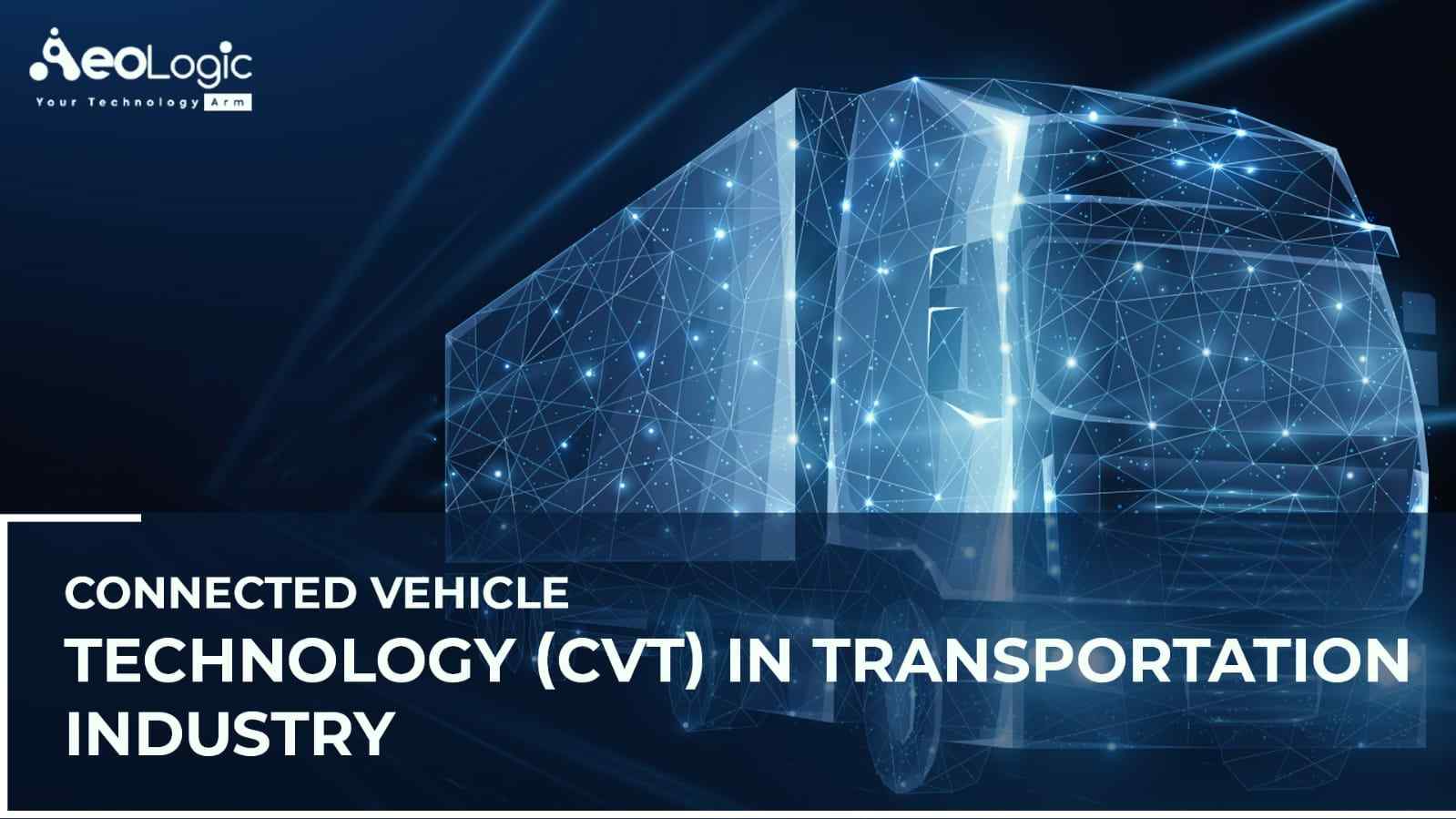One of the most widely investigated transportation technologies is automated and connected vehicle technologies. The automotive technologies that are presently accessible are only a small part of what is being created for the years ahead.
The advanced transportation system has always been disrupted by technological intervention, and it will continue to be so in the future. Connected and Autonomous Vehicles will gradually alter the functionality of existing transportation networks, promising increased safety for all road users. The techniques for self-driving cars, connected cars, and automated driving systems overlap; and this blog presents an analysis of the technologies, interpretations and advantages of this evolving field.
Emerging Technological Trends in CVT
CVT is a component of an intelligent transportation system that relies heavily on the internet of things (IoT) technology for broader implications. IoT helps in establishing important communication with other devices and vehicles moving around. As vehicles become more advanced and related, they connect to more advanced and powerful, high-bandwidth networks, enabling a variety of options. Automatic route planning, redirection from traffic congestion,
A global positioning system (GPS) is an example of technology to support connected vehicles, as GPS connectivity allows a car to plan a route that takes current traffic conditions into consideration in order to avoid traffic congestion. With the advancement of connected vehicle technology and reduced networks, the advancement of GPS and its applicability to connected vehicles will constantly evolve.
In the coming years, 5G modules will be built into connected vehicles, which will enable connected vehicles to communicate in near real-time.
Advantages of CVT
It is evident that the connected vehicle technology industry is fast expanding and will keep evolving in the years ahead. The advantages of CVT are manifold and have been presented below:
1. Safety
Connected vehicles provide drivers with 360-degree awareness of similarly equipped vehicles within a range of approximately 300 meters. This secure system keeps personal information private and does not track the vehicle. Drivers will receive warnings that inform them of potential hazards through visual display, seat vibrations, or tone.
These are warnings the driver remains in control of the vehicle at all times however the technology can also support limited automated functions in which the driver only seeds partial control of the vehicle. Warnings can help drivers respond quickly to avoid potential crashes. Connected vehicles can communicate with smart roadside infrastructure like rail grade crossings to alert drivers when a train is approaching even if the driver cannot see or hear the approaching train.
2. Road weather
Road weather: The connected vehicle can help with weather-related traffic and safety issues too. This is especially true with conditions such as black ice where the weather may not be near to be dangerous but the roads are slippery. Information collected from multiple connected vehicles can help determine when a potential hazard exists such as icy roads and warn drivers before they experience them.
Road weather data from the vehicles can be sent to traffic management centers or TMC’s providing detailed real-time information to help monitor and manage the transportation system’s performance. The centres can then take actions like adjusting traffic signals and speed limits, notifying maintenance crews, dispatching crew dispatch maintenance vehicles to the road, and broadcasting warnings for motorists. Motorists will be able to get road weather information on their personal devices before leaving home.
3. Environment
Connected vehicles can even help us to reduce our carbon footprint and facilitate green transportation choices. Eco lanes are similar to today’s high occupancy vehicle (HOV) lanes but with a big difference motorists in these lanes agree to drive eco-friendly vehicles and drive at a speed that conserves fuel. Drivers will be alerted about the proper speed with dynamic message signs.
Connected vehicle applications can help vehicles to reduce idling and unnecessary stops by communicating with smart traffic signals. Traffic signals broadcast data about their current signal phase and timing and systems inside the vehicles use the data to determine speed advice for drivers.
Drivers could then adjust their vehicle’s speed to pass the next traffic signal on green or slow down to stop in the most eco-friendly way, thereby saving fuel, reducing emissions, and saving drivers money.
4. Emergency
Connected vehicles can enhance awareness of unexpected roadside incidents like disabled vehicles, car crashes, police activity, and first responders caring for crash victims. Incident zone warnings will alert drivers about incidents ahead and warn them to slow down and change lanes. Communication could also be sent to first responders at the scene via shoulder radios to warn them of the danger of approaching vehicles.
Connected vehicles technology can help control traffic flow and reduce the resulting congestion at accident sites before it gets out of hand.
5. Mobility
With millions of connected vehicles, our ability to share robust data with each other and with smart infrastructure will continue to improve traffic flow and enhance coordination with transit and make our communities even more safe and livable.
The connection protection applications give public transportation providers and travellers the ability to communicate in two ways. The connected network gives passengers real-time transit information so that they can more accurately predict whether they will make their next connection. If multiple people on a delayed bus will miss their next connection, transportation providers can adjust bus departures to enable the passengers to make their next connection.
Conclusion
To sum up, connected vehicles technology is a game-changer and is very useful for the transportation industry. People are already reaping benefits from it and continuously updating it to optimize the transportation industry more. Are you looking to implement connected vehicle technology into your transportation business? If yes so please feel free to contact us at support@aeologic.com

Manoj Kumar is a seasoned Digital Marketing Manager and passionate Tech Blogger with deep expertise in SEO, AI trends, and emerging digital technologies. He writes about innovative solutions that drive growth and transformation across industry.
Featured on – YOURSTORY | TECHSLING | ELEARNINGINDUSTRY | DATASCIENCECENTRAL | TIMESOFINDIA | MEDIUM | DATAFLOQ









